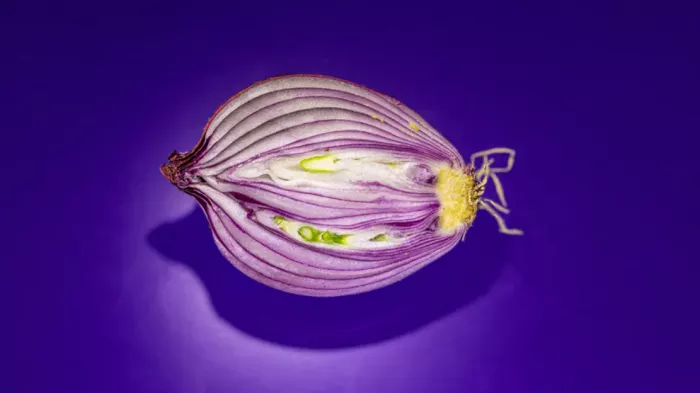Recently, CNET's reporter Peter Butler published an article introducing the story between him and cutting onions. He wrote: many years ago, at a birthday party of my brother, a guest (also a chef) gave me a good food preparation skill - how to cut onions, and I have been using this method since then.

Over the years, I have been using his technique, which undoubtedly makes my onions simple and neat, and I recently learned that there is another great advantage - it can reduce tears in the process of cutting onions. When I cut onions this way, I almost never cry. If I cry, it's usually because I screwed up.
Why does cutting onions make us cry
Onion belongs to the genus Allium of flowering plants, which includes garlic, leek, scallion and leek. They grow underground in the form of bulbs, and their roots contain toxic substances to protect themselves from moles and other underground pests. It is reported that these toxins are strong enough to poison cats and dogs.
I don't want to be too professional, but onions absorb sulfur from the soil and form sulfides of amino acids. When the onion is cut, these sulfides combine with other enzymes in the onion to produce sulfur gas. When this gas interacts with the water around your eyes, it produces sulfur dioxide, which in turn burns and causes your eyes to cry.
How to cut onions without tears
Most of the sulfide in onions is found in its roots, the hairy round part at the bottom of the onion. If you don't touch the root, you will greatly reduce the amount of chemicals that make you cry during cutting.
A simple way is to cut off the end of the root and discard it at the beginning. Then you can cut the rest of the onion into small pieces you like.
The effect of this method is not so good. If you think of it so far, it's very good. But I think my method is better because it avoids chopping the roots and allows you to easily deal with the rest of the onion.
First, cut the onion longitudinally from the top to the root. Yes, this will cut the root in half, but this is the only time you have to cut it. Then remove the inedible outer layer and cut off half of the tip.
Now you're ready to dice. Make a series of slices horizontally on one half, half an inch from the top. Most importantly, stop slicing before you reach the root so that you can connect the onions at the end of the root.
Next, make a series of vertical cuts with the tip pointing to the root, starting from one side and then moving to the other side. Also, don't cut to the root -- use your tip to stop near the root and cut down the onion. Watch it. These cuts are the biggest chance of making mistakes - they accidentally cut to the root.
In order to cut the onion, start the third round from the farthest end from the root, and gradually approach each knife. These films will separate your slice from the rest of the onion.
Complete the final vertical cut before reaching the root. The root can be thrown away, leaving a beautiful and neat pile of diced onions. Repeat the process with the other half of the onion to finish the cutting.
What other ways to avoid tears when cutting onions
I wear contact lenses, which protect the sulfur output of onions, so I don't cry easily when cutting. If you try my cut and still find yourself crying, there are other techniques you can use to reduce the impact of onions.
First, try to refrigerate the onions briefly before cutting them. The national onion Association recommends that onions be refrigerated for 30 minutes before preparation. It says lower temperatures will slow down the sulfur gas, making your eyes less responsive.
Next, try to sharpen your knife. A blunt knife will crush onions more than a sharp knife and may release more sulfide.
Finally, if you're still crying, try cutting onions under ceiling fans or kitchen vents. Both may help dissipate sulfur gas before it hits your eyes.